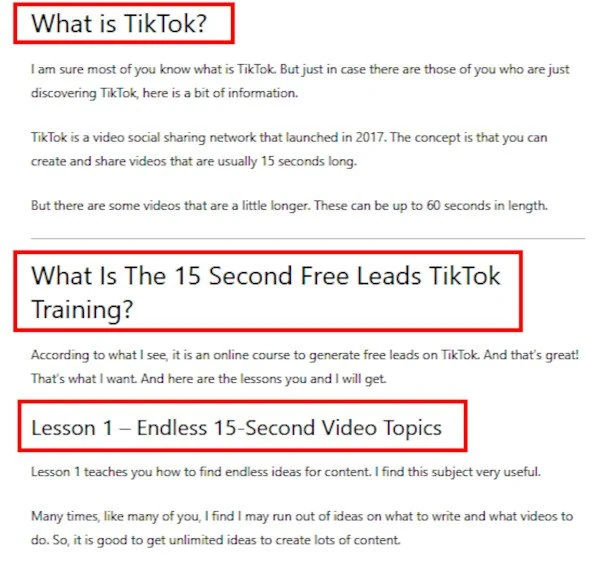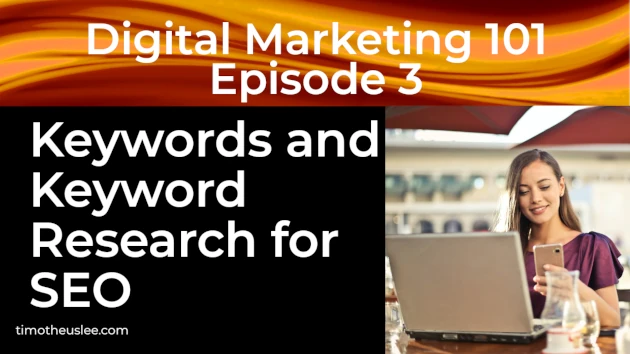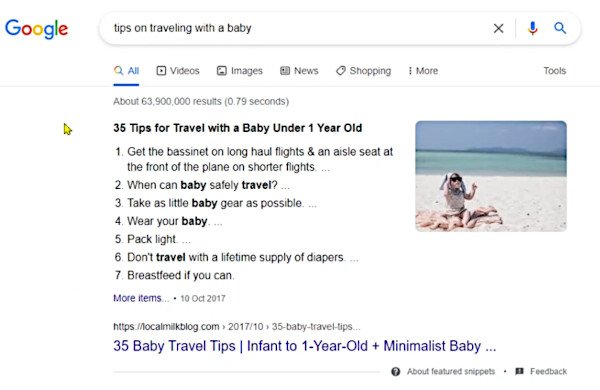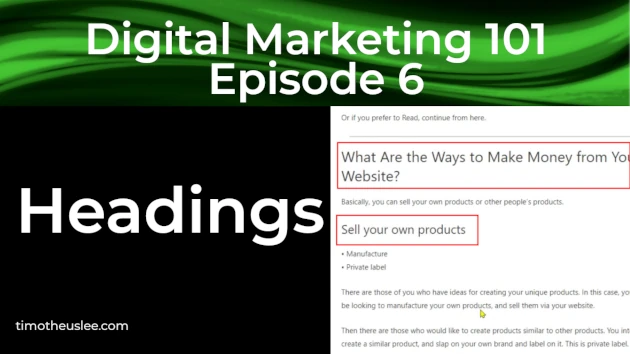Disclosure: Some links here are affiliate links. I get a commission if you buy, but you don’t pay extra. This supports my blog and lets me share quality content. I only suggest what I trust and use. Thanks!
Introduction
Hi Everyone!
This is the 6th episode of Digital Marketing 101 series. And it is about the 12 On Page SEO techniques.
I am presenting each of these techniques as individual blog posts. This is the 3rd of the 12 techniques. And it is about Headings.
What are Headings? How to write a powerful and effective Headings?
Let us discuss in this blog post.
Digital Marketing
Would you like to learn how to start and grow an affiliate marketing business? Join my I Love Passive Income community for more tips and useful business information. Simply fill in the details below, and you will receive an email with instructions on how to join this invaluable community.
Watch: On Page SEO – Headings – 3rd of 12 Techniques That Work | Episode 6 | Digital Marketing 101
What are Headings?
Headings are usually a short summary or explanation of what the information within the section of content will be about. You can see these usually in blog posts like mine. For example, the heading just above, which is What are Headings?
At the same time, it makes it easier for the search bots to understand what your website or web page is all about, too. Google and other search engines look at headings to determine how relevant the page is to a user’s search query.
But headings does not specifically impact your SEO. The benefits you reap from a well written heading is indirect.
This is because when you have headings within your content, it will be seen as texts of higher quality. It is seen as such because the headings makes it easier to read your content.
Headings are also a great way for breaking up the text instead of having a whole page filled with nothing but text. You can break up the content by using headings.
Also, you can use headings to organize your content into sections. This makes it easier for readers to consume the information that you’re presenting on your web page.

As you write your content, you should organize it into various sections. Then think of the headings for each of this section and add headings for each section.
This will make it easier for your visitors to browse and scan your content. They will then find it easier to read, and they will stay on your page. Also, they will scan the page to see if that page has what they are looking for.
When visitors cannot find what they are looking for, they will quickly leave your website. As such, by having easily scannable content, you help your visitors to stay longer on your web page. Better still, after scanning, it helps them to realize it is what they are looking for, and they continue to read your article.
This will lower bounce rates. And that is one of the ranking factors that impact SEO.
Levels of Headings
You can create up to 6 levels of header tags. They are called H1 tag, H2 tag, H3 tag, H4 tag, H5 tag and H6 tag.
The ‘H’ stands for Header, of course. H1 is for the main heading of your web page or blog post. H2 to H6 are the subsequent sub headers.
They are sequential in levels. What this means is that H2 is the sub header within H1. H3 is the sub header within H2. And so on.
How to Write Powerful and Effective Headers?
So, now I’m going to share with you how to write powerful and effective headers.
Headers Create Structure & Context
One thing to note is that headers provide structure and context for your article. The text in the headers should be like a summary of the content in the section that follows.
You should also use headers to break up text in your article. This is as opposed to having an entire page that is filled with nothing but text. When you have headers, it makes the article more scannable.
As mentioned above, a scannable article is a readable article. And a readable article is one that is more likely to perform well in the search engines.
Headers Create Relevance
Make sure the headings are related to the primary keyword/header for that page. Also, use headings that are relevant to content, that is to each section.
Each header should give the reader an idea of the information they are going to get from the section below, and also from the paragraphs of text. This will make the text more scannable and more readable.
Again, the more scannable your content, the more readable it is. And visitors stay on your web page longer. And, as a result, you will get lower bounce rate, which is very good for SEO.
Importance of H1 for SEO
H1 is for the main heading of your web page or post. It can also be the title of your article.
H1s are usually the most visually notable content on the page, and are probably the most important SEO feature. H1 should describe what the content is all about.
Please take note that H1 should be between 20 and 70 characters.
Add Keyword to H1 Header
You should add the keyword that you are ranking for into this main header. Preferably, you should use a Focused Long-Tail Keyword in Your H1.
You can learn more about Long Tailed Keywords, and other keywords as well as about keyword research in another blog post I wrote. Click on the image below to find out more about this.

Then, add your keyphrase in your subheadings. And include your main keywords in H1s and H2s.
Your page should be readable first and foremost, and naturally include keywords. So, write naturally. I mean, sure, you can include the keywords. But do your best to write naturally, too.
Important Tip – Add Keyword to H1 only. For H2 to H6, write naturally. Make sure headers are relevant to section content.
No Duplicate H1s
Make sure that your H1s are all unique. Do not have H1s that are on duplicate pages.
Optimize for featured snippets
Your pages can be optimized for featured snippets. Headers seems to be a positive impact on SEO, especially for Long Tailed Keywords for Voice Search.
When a person makes a search query, and the query is answered, Google and other search engines actually look at these headers. And they actually use the headers to outline different list items on search results.
As you can see from the image below, Google used the headers to create its own bulleted and numbered lists as featured snippets in response to the search query.

Consistent Style of Writing
Have a consistent style of writing headers. If you write headers in a certain way, always write it that way. This is so that your content becomes much more easily readable.
Make Headers Interesting
Make your headers interesting. Write intriguing header tags that will encourage visitors to take another look, and read your content.
Additional Tips
Here are some additional tips. Do Not use special characters like $, %, @, etc.
And I think I mentioned this before, but do remember not to use the same headers many times.
Also, Do Not use headers with just one word.
Would you like to learn how to start and grow an affiliate marketing business? Join my I Love Passive Income community for more tips and useful business information. Simply fill in the details below, and you will receive an email with instructions on how to join this invaluable community.
On Page SEO – Headings – 3rd of 12 Techniques That Work | Episode 6 | Digital Marketing 101
Timotheus Final Thoughts
Do you have any questions about Headings? Let me know in the comments.
In my next blog post, I will share about another On Page SEO technique. It will be about the Image Alt Text Tag. Remember to join my I Love Passive Income community to get updated whenever I publish a new blog post.
Would you like to get more training and learn more about On Page SEO? Here is a resource filled with information and lessons about digital business and digital marketing.
You can join the Free Starter Package with just your email. No credit card needed for this Free Starter Package.
There is some free training as well as really powerful tools and features to help you do digital marketing for your online business.

You Get My Bonus!
When you join the above program, I will be your mentor. I will guide you, help you succeed as an online entrepreneur, and make money.
If you have ANY questions, or anything to clarify, please drop a comment below. I will be happy to help you.
I wish everyone great wealth and success.
Timotheus
Digital Marketer, Lecturer, Amazon Bestselling Author & Cancer Survivor
